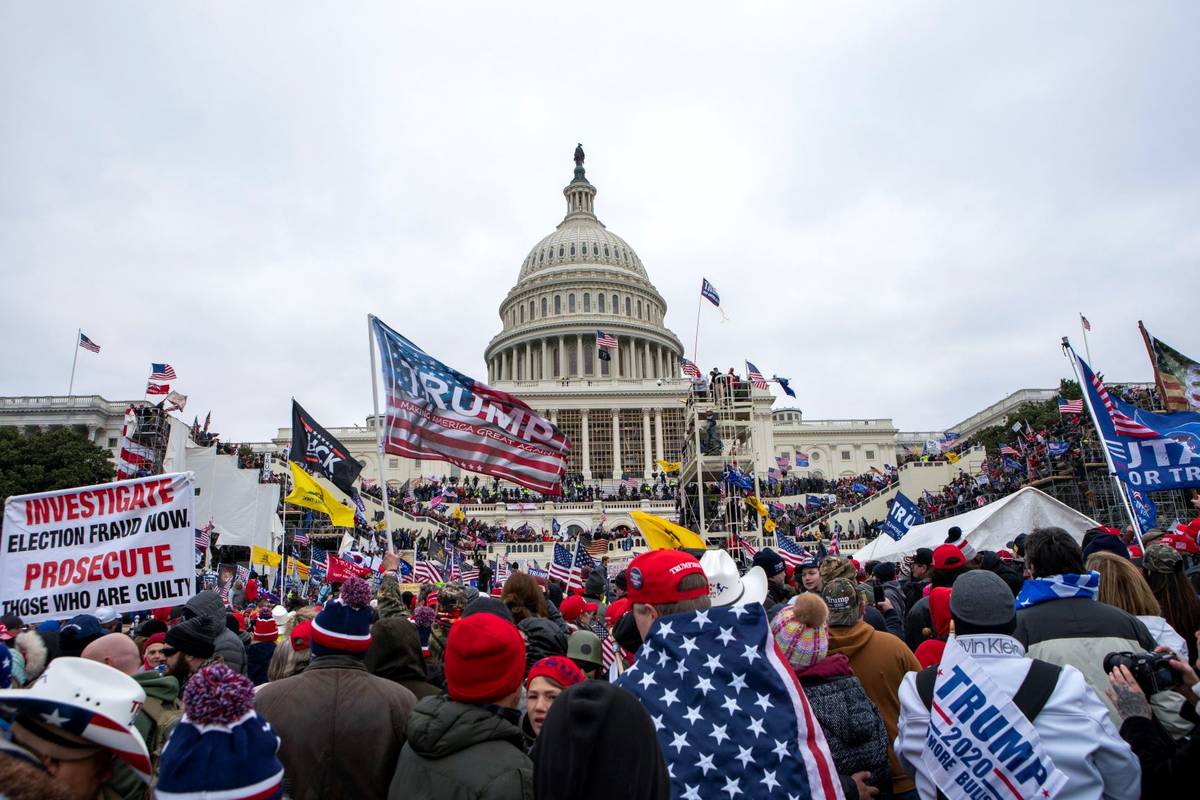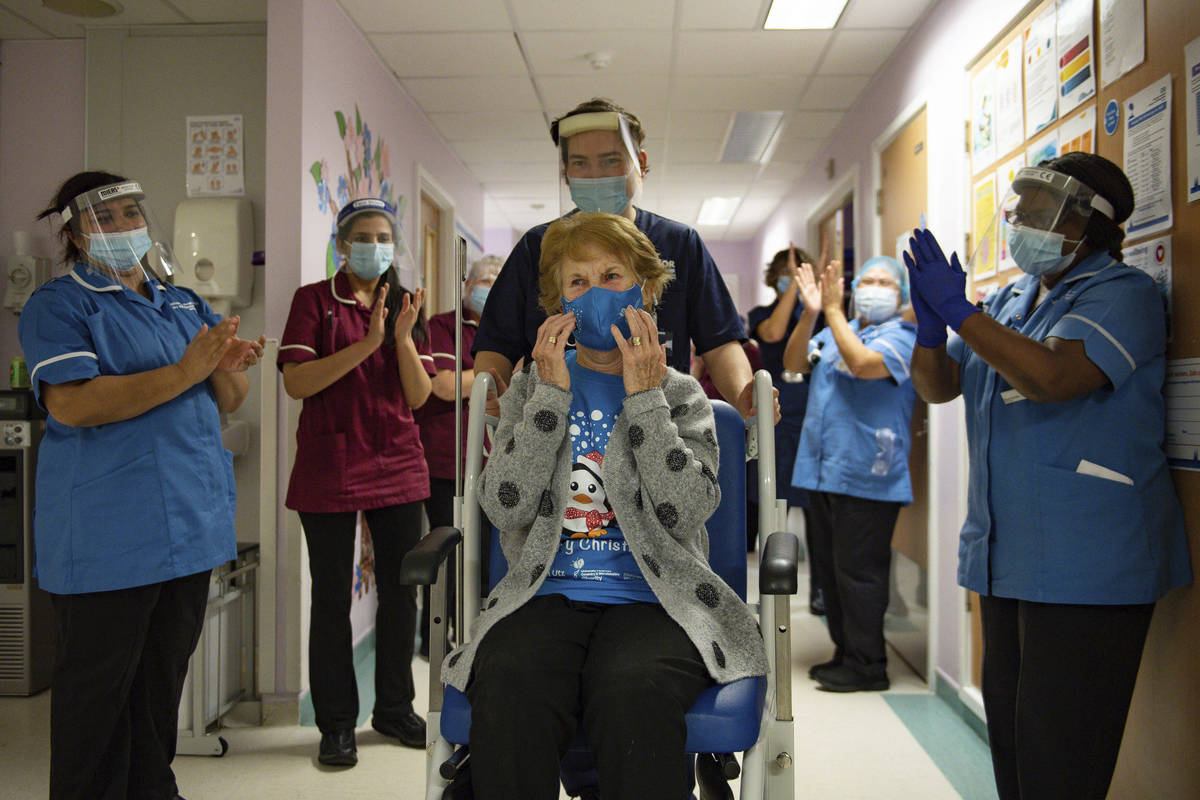How CCSD teachers put Capitol riot in current context
The morning after the third or fourth — fifth? — major historical event of the last year, Clark County history teachers prepared to face classes of students coming of age in a pressure cooker.
They spent Wednesday afternoon watching coverage of a mob, some holding flags of the sitting president, ransack the nation’s capital, and many hours during the night collaborating with other social studies teachers on how to frame the insurrection in the context of American and world history.
By Thursday morning, they were logging in again to virtual classrooms, their school buildings still closed after 10 months of a pandemic that’s killed 365,000 people in the U.S.
Where to start? For Canyon Springs High School history and political science teacher Jamie Tadrzynski, the first step was to contextualize the Capitol invasion for herself.
Tadrzynski lived in Pennsylvania during the Sept. 11, 2001, terrorist attacks and first taught students who, like her, vividly remembered that day. Her oldest students now were born in 2002 or 2003, and learn about 9/11 only as a historical event, much like she did the assassination of President John F. Kennedy.
‘My kids come with questions’
She also balanced the professional expectation to be nonpartisan, the awareness that some of her students have lived through violence and the belief that they all deserved a calm and respectful space to ask questions.
“My kids come with questions,” she said. “It’s my job as an educator to help them answer those questions. And if I don’t know the answer, to help them find answers and give them a space to express themselves. Today they had fear and anger and confusion — those are some of the same sentiments I felt. The difference is that I’m older than them and I’ve been able to process them.”
In all her classes, Tadrzynski began by encouraging students to ask questions.
Then, they went over some of the basics of government: what a peaceful transition of power looks like; why the Georgia Senate runoff was meaningful; what it means for one party to control both Congress and the presidency. They mentioned the last time the Capitol building was stormed during the War of 1812. The purpose is to allow students to begin contextualizing for themselves, she said.
Conversations with her freshmen went differently than those with her seniors: the former are bright and curious, but often still finding their voices. Many of them were impressed to learn that the Capitol was built with escape routes for emergencies.
Meanwhile, some of the latter are old enough to have voted in the last election and will go out into the world as adults in just four short months. They’re accustomed to discussing global protests in the Leadership and Law Preparatory Academy at Canyon Springs. And many were profoundly affected by the Black Lives Matter marches of the past summer.
“I think it’s a different conversation with students who have experienced violence,” Tadrzynski said. “Black Lives Matter — it’s applicable to them. That’s their lives on the line.”
Tadrzynski then led the classes to primary sources from Wednesday — media interviews with members of Congress from both parties explaining their fear and shock as they sheltered in place. Rather than frame history as two-sided, Tadrzynski said she wants her students to see how individual experiences lead to a multifaceted historical record.
While she’s heard of some educators reticent to allow current events like Wednesday’s into the classroom, Tadrzynski said she believes it’s her duty as an educator to do that.
“I want them going into the world knowing who they are, what they’re passionate about and what’s going on in their society,” she said.
Let them talk
Robert Cowles, a social studies teacher at Rancho High School, also went into his class expecting to be a neutral moderator for a student-led conversation. He found that though many students had watched the news, they weren’t ready to discuss it.
Instead, their first question for Cowles was how to handle an adult family member who holds opposing political beliefs and tries to dismiss their concerns because they are “just kids.”
He said he told them about the first time he found evidence that his grandfather was wrong about something and was dismissed anyway. Now 28 years on, it still bothers him.
“Then I explained that sometimes it’s easier to just avoid having conversations with people who you know are just going to dismiss what you say, even when you have evidence to support your position,” Cowles said. “That many … people make decisions based on how they feel, and they’ll only accept evidence if it supports their view.”
Then he stepped back and let them talk.
Alex Gallegos, a senior at Eldorado High School and student representative to the Nevada Board of Education, said his contemporary problems class approached the events of Wednesday in an open discussion, pulling in this year’s lessons on media and digital literacy. Conscious of the other major news events of the last year, they did not shy away from pointing out the difference in the treatment and demographics of the Black Lives Matter demonstrators over the summer and the crowd on Wednesday — a disparity also decried by lawmakers and President-elect Joe Biden this week.
Gallegos credited his teacher with providing the space for this discussion, something he believes all teachers have a responsibility to do in order to dispel the misinformation that fueled Wednesday’s events.
“These are going to be images that live in the American psyche forever, the same way video of the Twin Towers falling does, the same way Pearl Harbor does. It’s really an injustice to not discuss it.” Gallegos said. “It transcends politics.”
Even the youngest children understand when something is happening in the world via the anxiety of the adults around them, Gallegos added, and they’re likely to carry it for years to come. Open discussions are important then, he said, not only to ease their fear and ensure nothing like this happens again, but to communicate that this attempt to subvert democracy was ultimately a failure.
Looking toward the rest of this year that includes his graduation amid such mass uncertainty, Gallegos said he reflected on a quote by the late Supreme Court Justice Ruth Bader Ginsburg, who said the symbol of America is not the eagle, but the pendulum which swings too far in one direction and then swings back.
“Hopefully that’s what we’re going to see,” Gallegos said. “The pendulum start to swing back.”
Contact Aleksandra Appleton at 702-383-0218 or aappleton@reviewjournal.com. Follow @aleksappleton on Twitter.












































